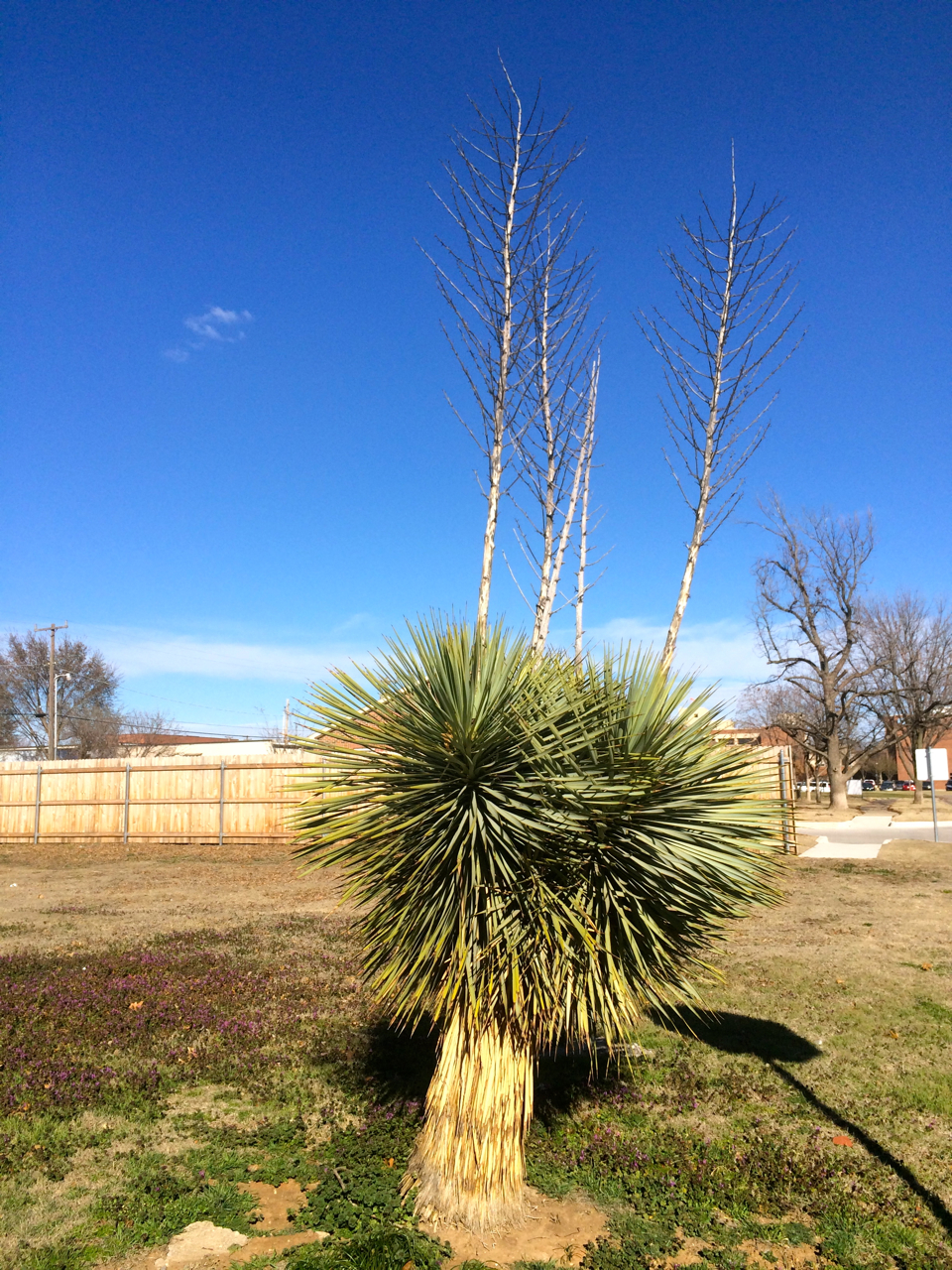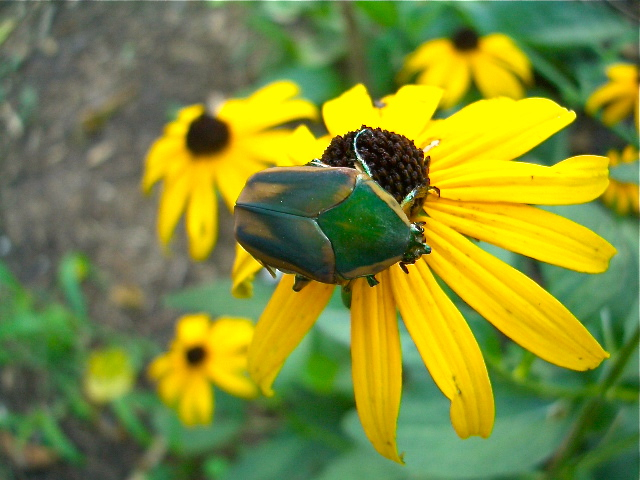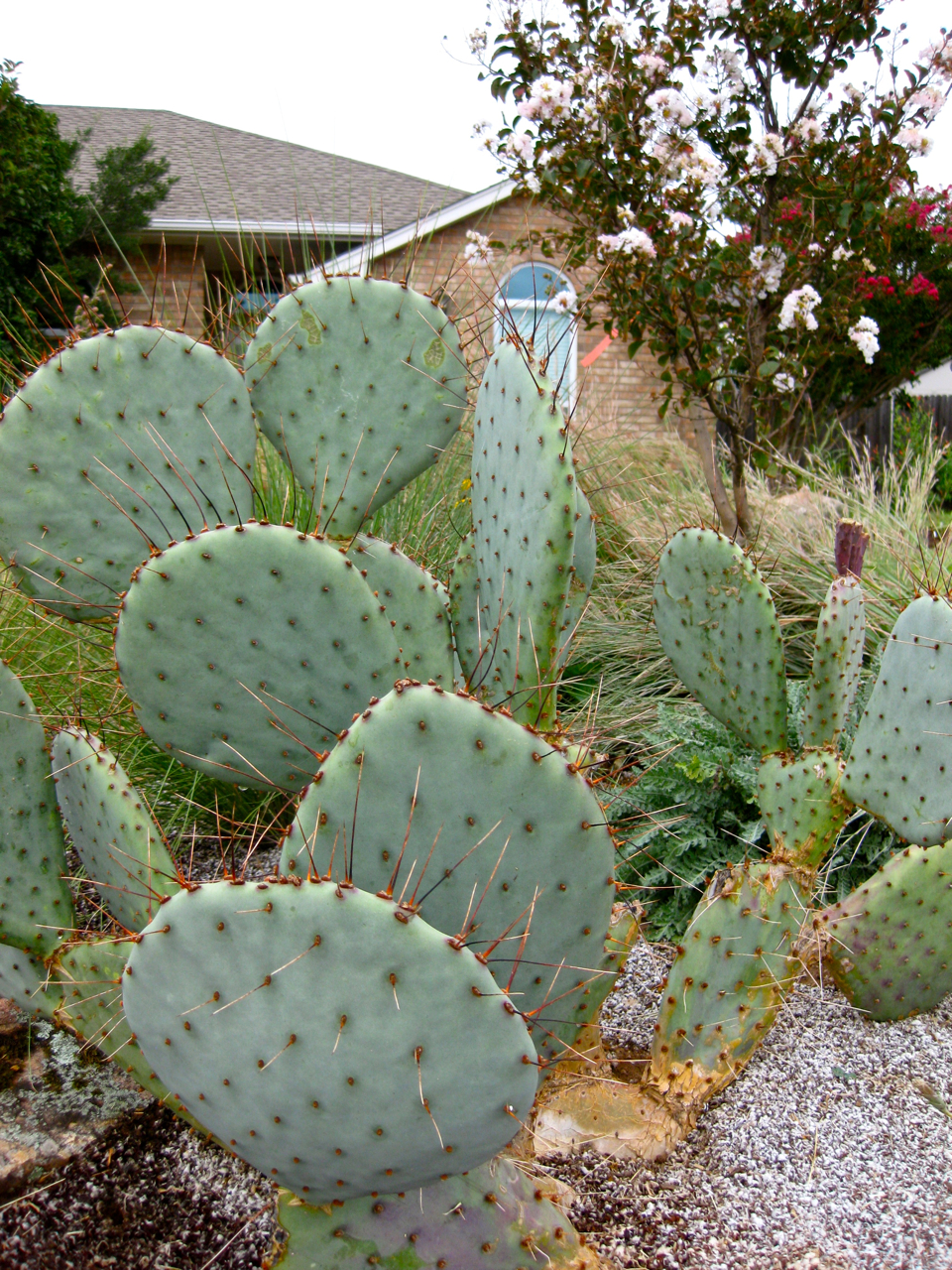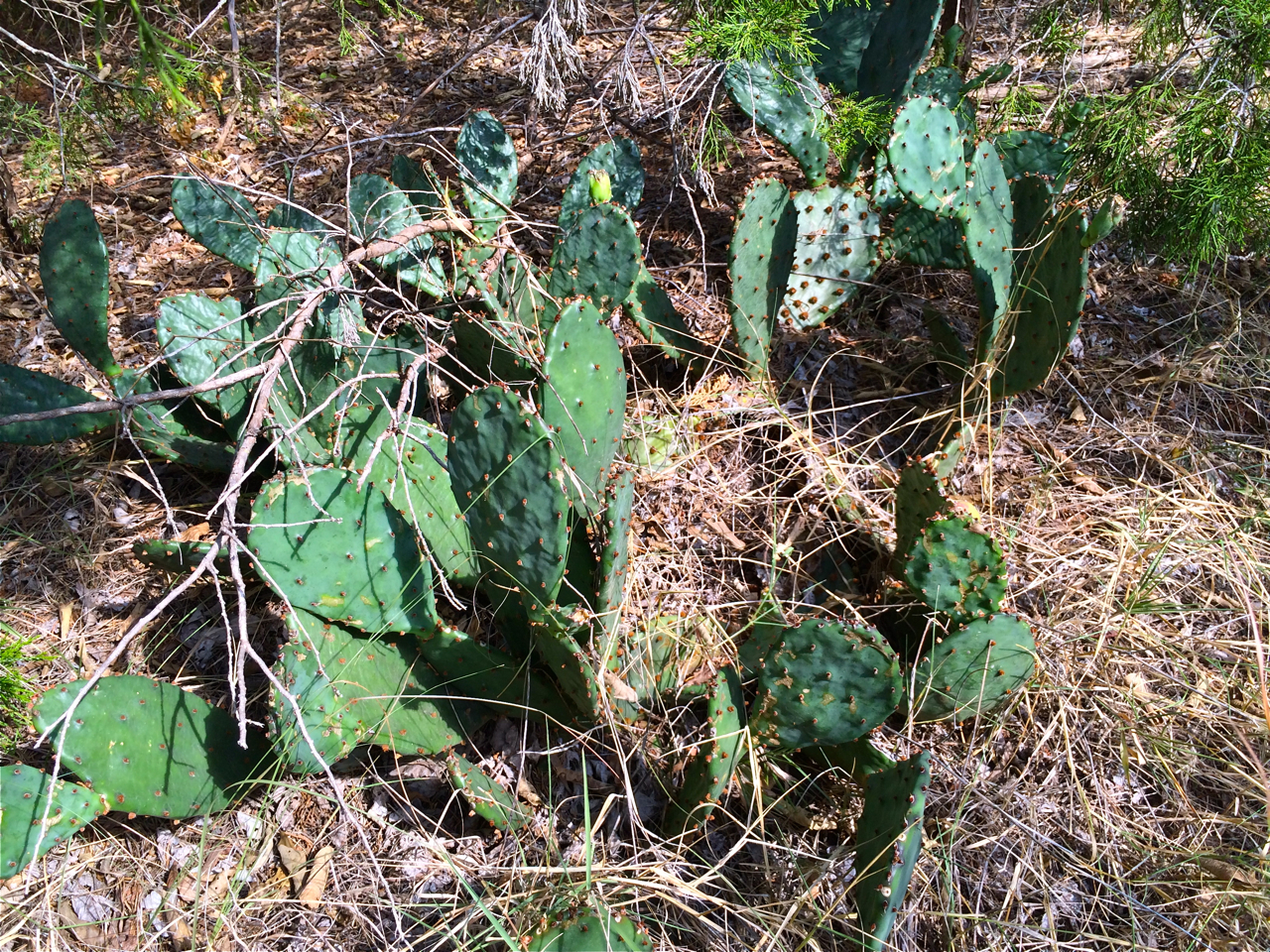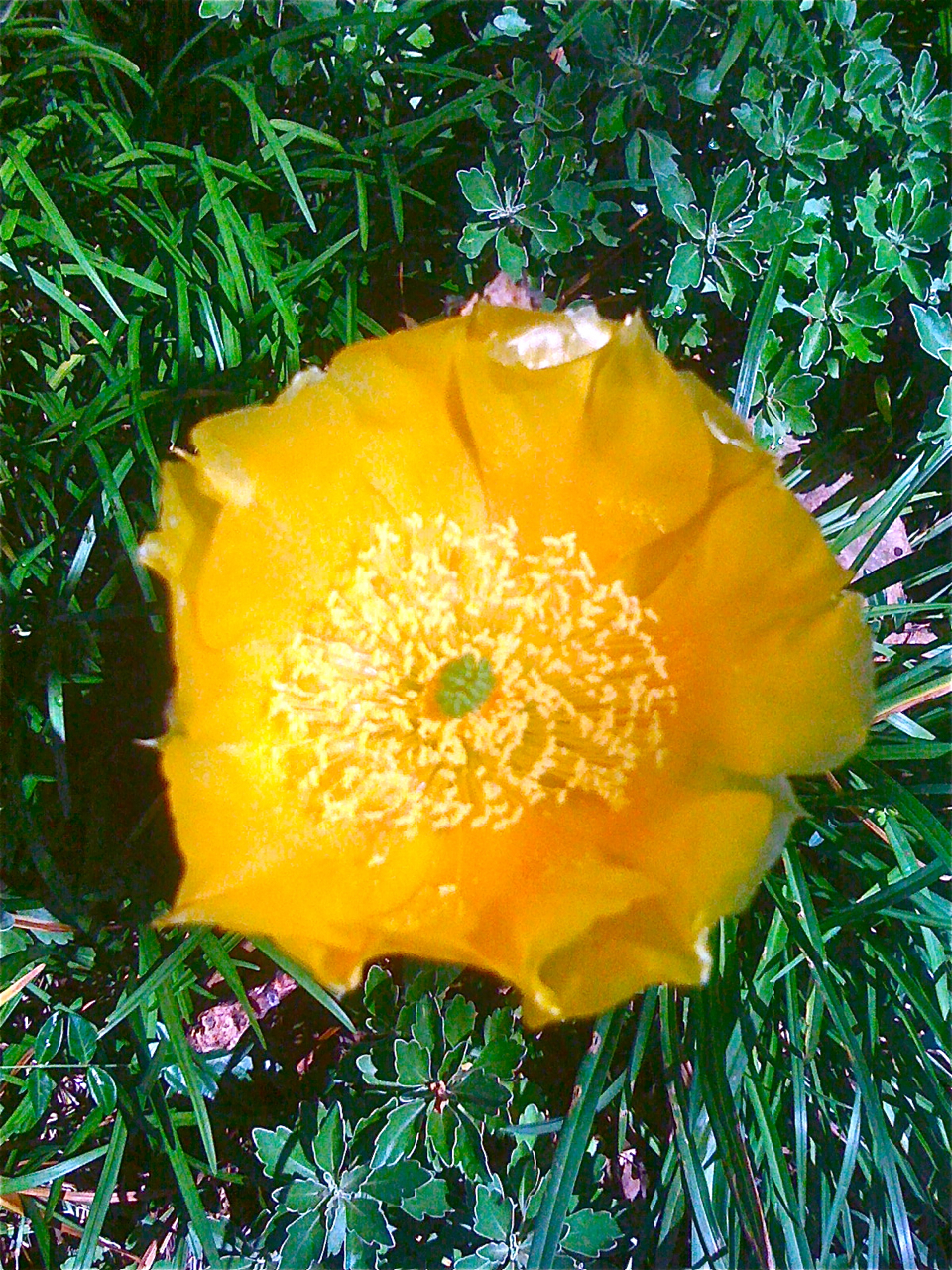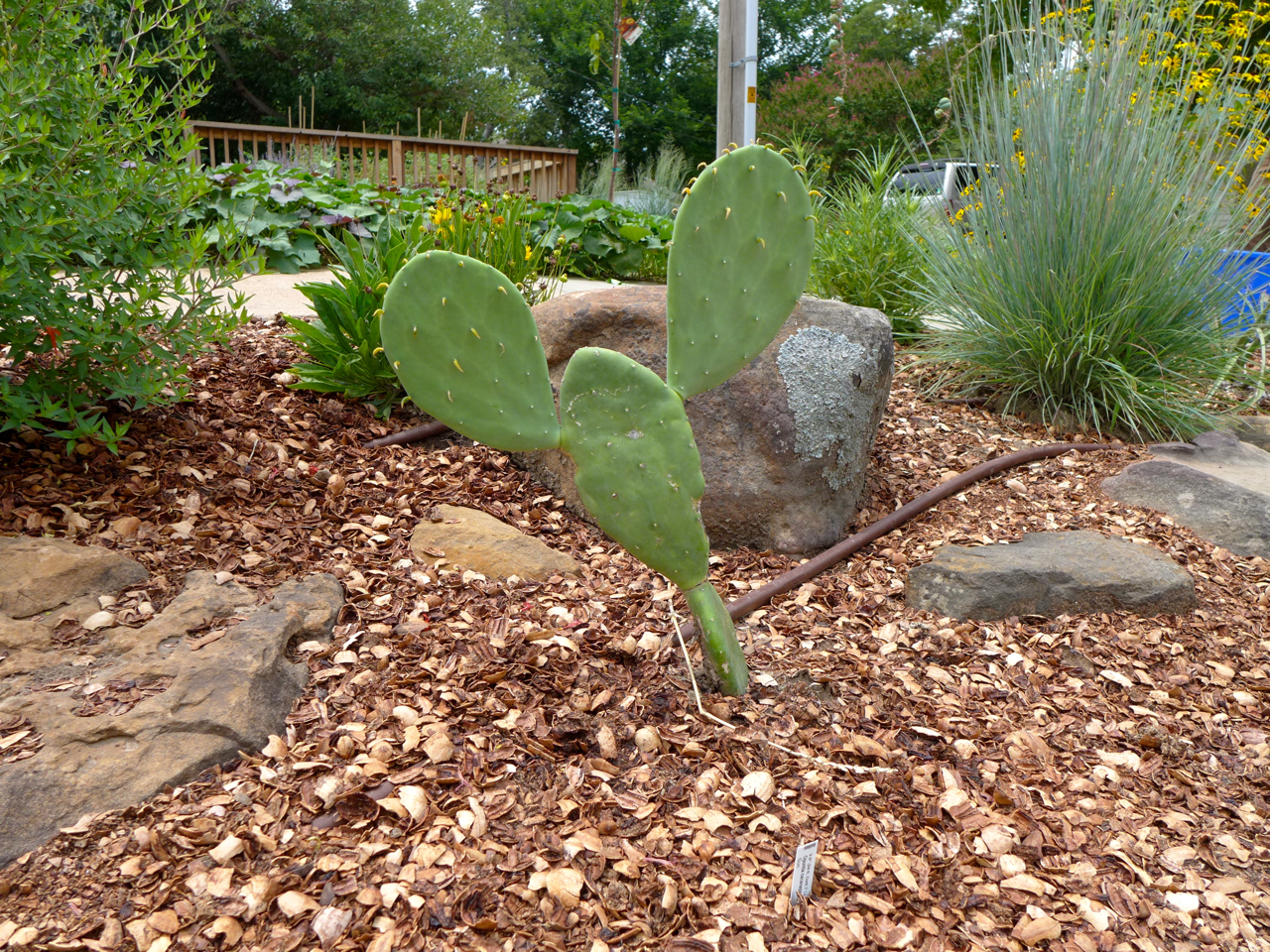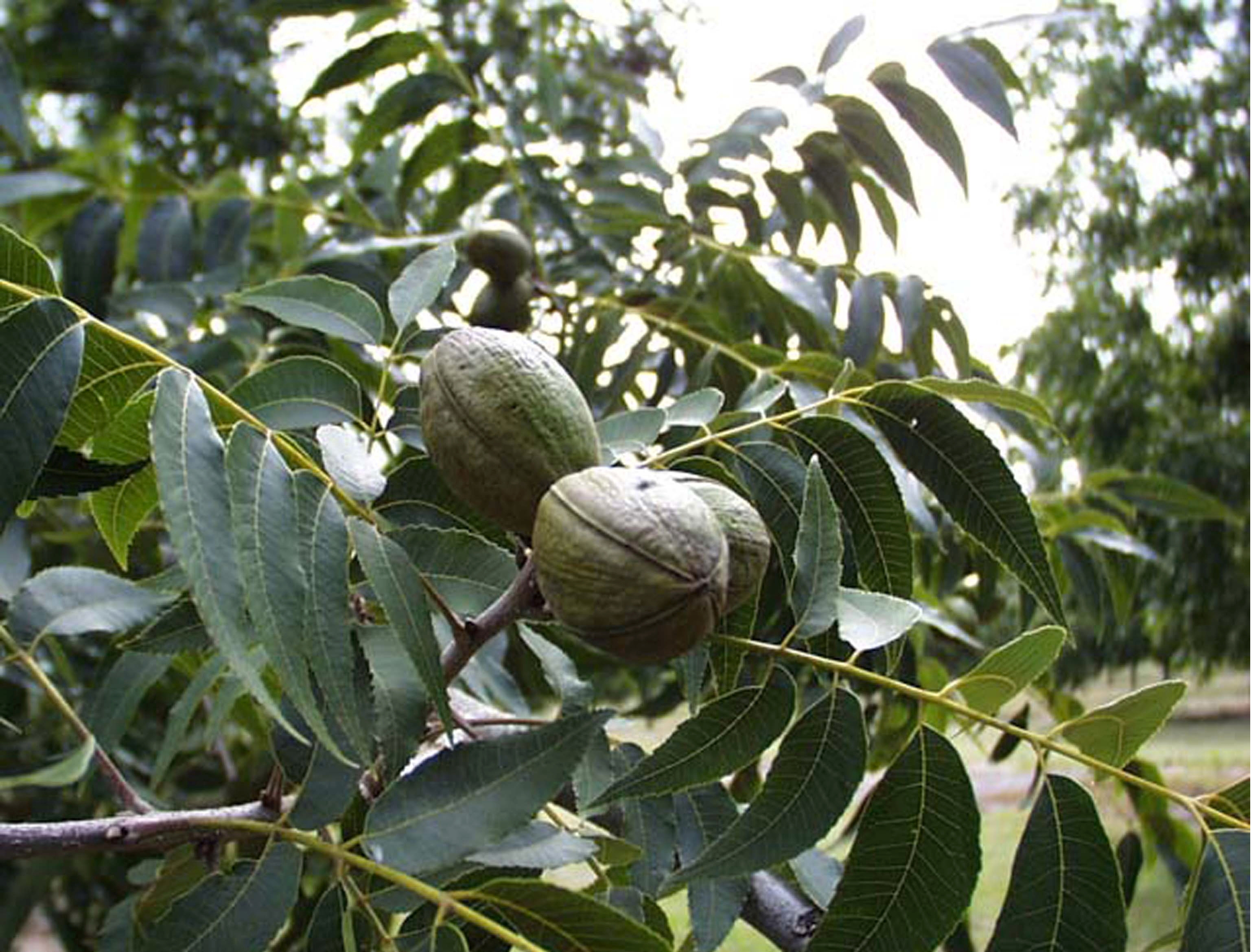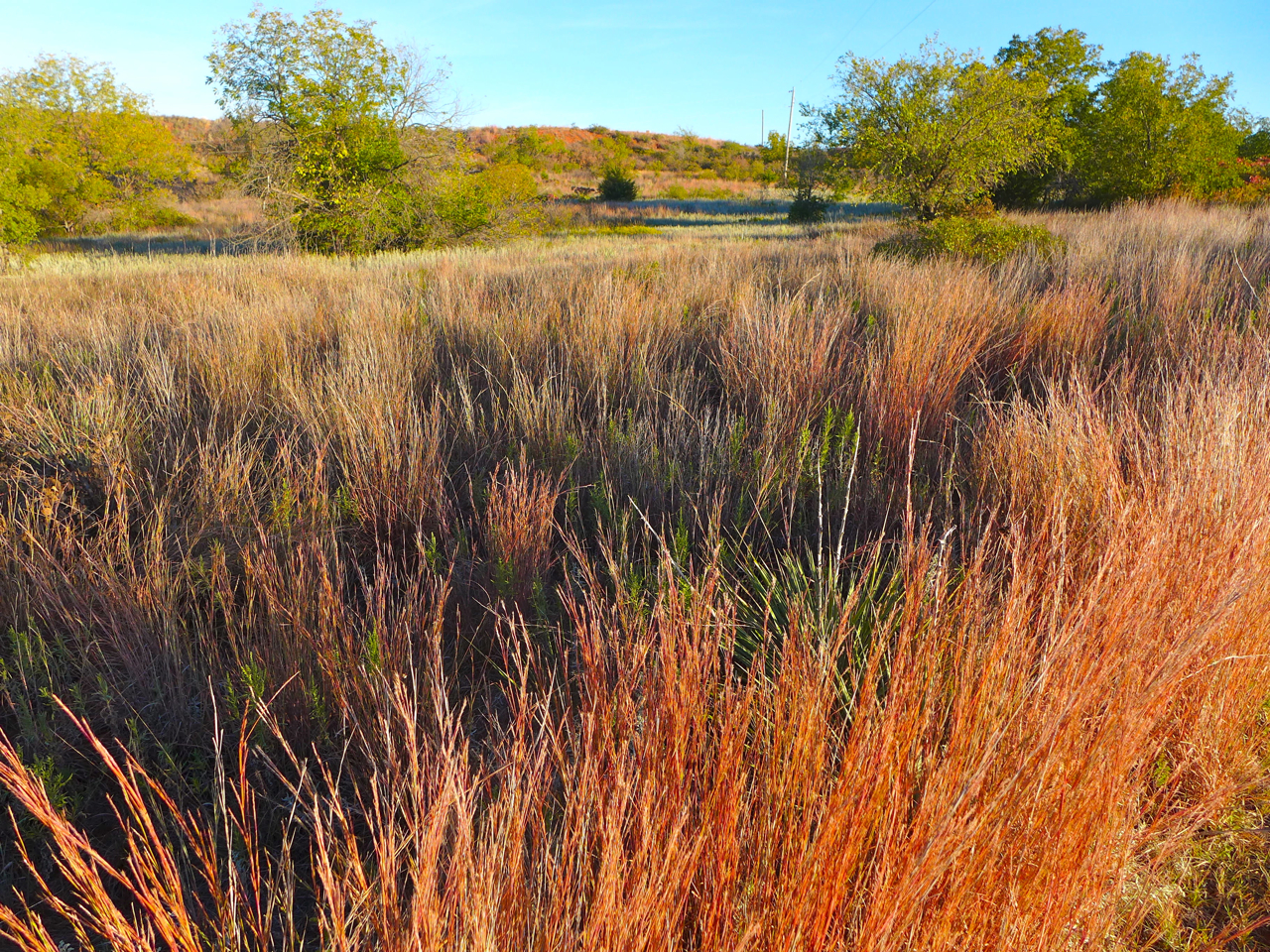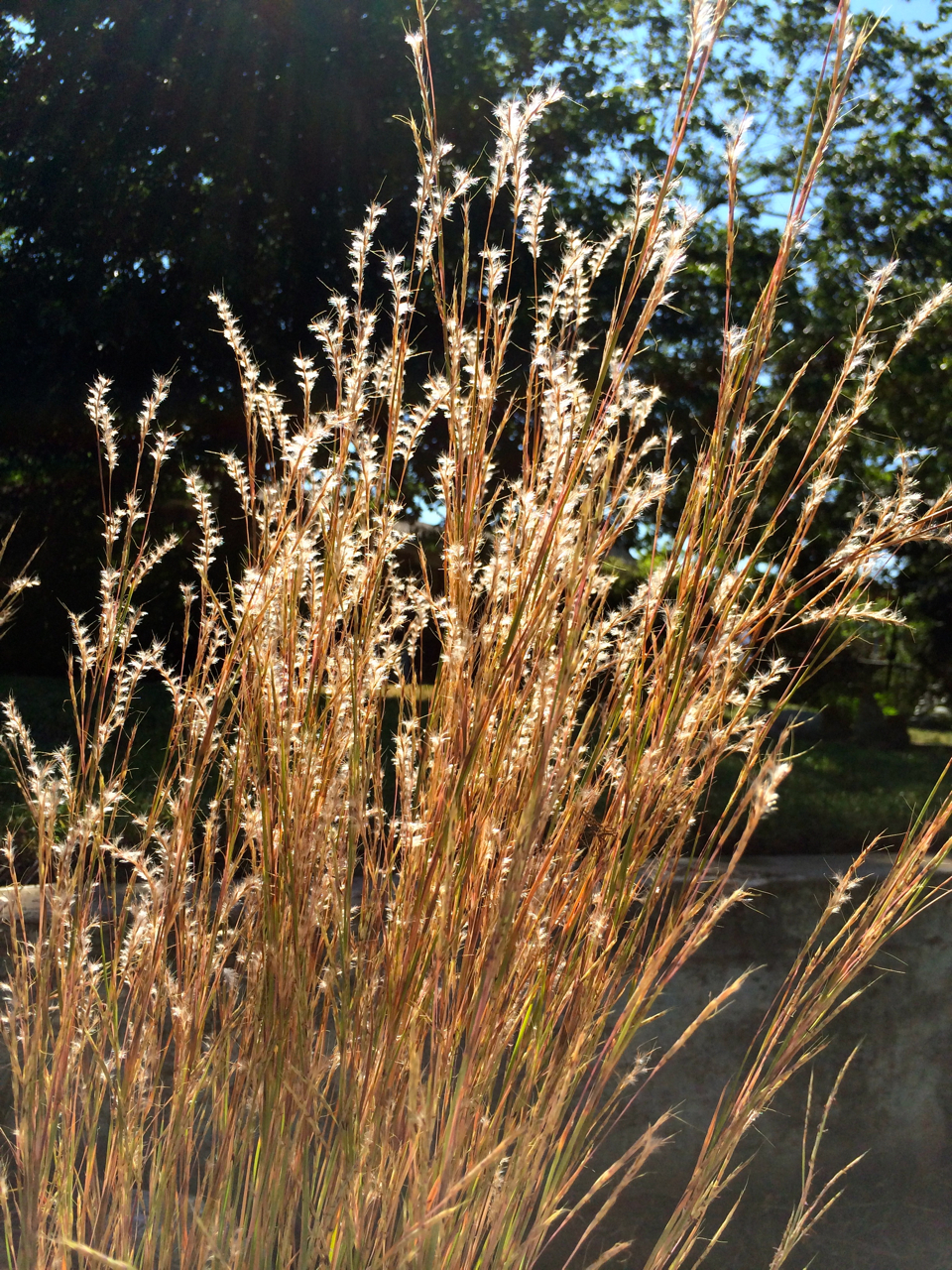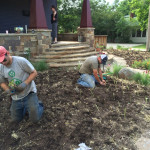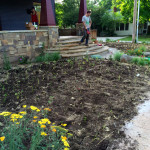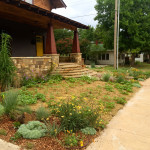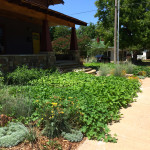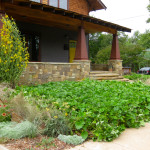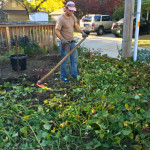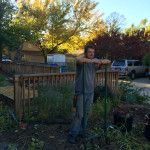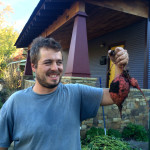Occasionally you get glimpses of what this land may have looked like 150 years ago. I can imagine a whole hillside covered in the pretty purple spring blossoms of Anemone caroliniana. Sadly, today I found only this one lone specimen, perhaps the last of it’s kind in this spot. Remnants of the past but also inspiration for the future. Together we can bring back some of these past beauties.
Tag: oklahoma
A Bit of the Ol’ Southwest in Norman
Aphanostephus skirrhobasis (lazy daisy)
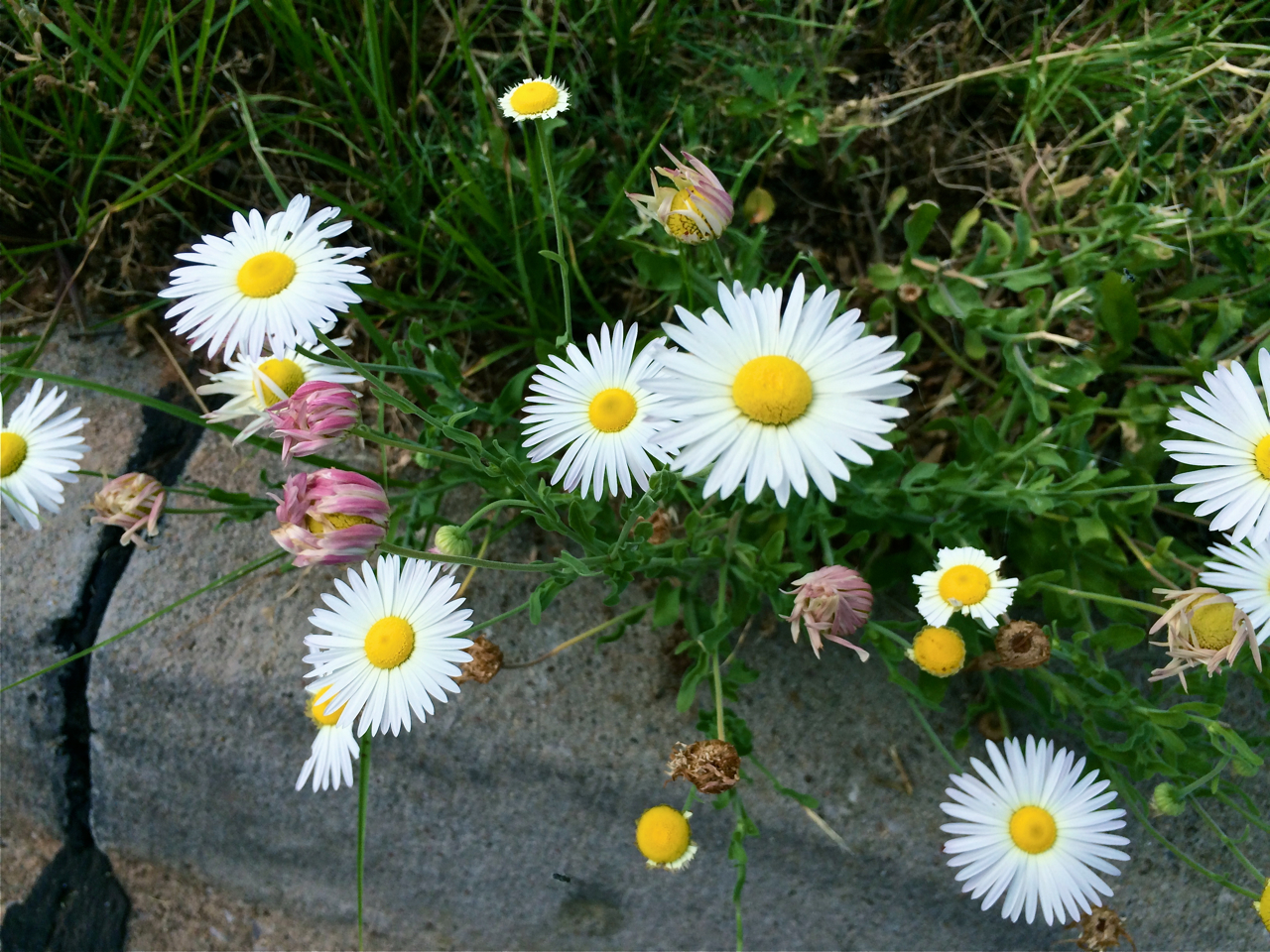
Height: 1-2 feet
Spread: 1-2 feet
Type: Annual
Origin: Grows in many Oklahoma counties and also Arkansas, Missouri, and Texas
Water: dry to medium
Exposure: Full sun
Edible: ?
Medicinal: ?
Companions: Often seen with short grass prairie plants like : Liatris spicata (dotted gayfeather), Bouteloua gracilis (blue grama), and Gaillardia pulchella (indian blanket)
Notes: Aphanostephus skirrhobasis is a long blooming annual often found in sandy hot prairies and disturbed sites. It beautiful white and gold blooms are much like small Ox eye or Shasta daisies but they have a lovely pink to rose shade on the underside of the ray florets. A field of these in bloom is like a sea of stars, it’s nothing short of magical. It’s common name ‘Lazy Daisy’ comes from it’s predilection to wait until midday to open it’s flowers (not an early riser). It is a particularly hardy flower and can thrive in sandy soils with little water. It is known to grow in the grasslands, meadows, pastures, savannahs, and even on the edges of woodlands. In the garden it will grow into a nice low colorful mound of white blossoms. Due to it’s low profile it works well in the front of beds or dotted amongst low growing grasses. Native annuals are often overlooked as alternative to traditional bedding plants but it’s somewhat baffling why this one isn’t grown and appreciated more. Like many annuals, Lazy Daisy is good at self seeding so it can stick around in your beds for many years. If you are looking to attract wildlife then the lazy daisy is also helpful because they have a large amount of crude protein which deer in particular love to browse year round. Thanks and Good Luck!
Rudbeckia fulgida (black eyed susan)
Height: 2-3 feet
Spread: 2-2 ½+ feet
Type: Perennial
Origin: Native to central and eastern U.S., including some southern and eastern Oklahoma counties
Exposure: Full sun to part shade
Water: Medium
Edible: no
Medicinal: no
Companions: Sporobolus heterolepis (prairie dropseed), Lobelia cardinalis (cardinal flower), Echinacdea purpurea (purple coneflower)
Notes: Rudbeckia fulgida is the common perennial “black eyed susan” sometimes referred to as “orange coneflower”. It is native to the eastern United States and grows in moist to moderately dry soils in open woods, glades and thickets. It’s dependable profuse display of yellow coneflower blooms make it a somewhat ubiquitous but still very worthy member of any bed. It always performs well in our hot summers and it’s very adaptable to different soil and light situations. The bloom period generally starts in June but deadheading can encourage one or more successive blooms. R. fulgida does spread by rhizomes and will gradually spread but it is easy to divide and control. The divided clumps transplant well, and the blooms make good cut flowers. Plant them en masse as a border or in a cottage, meadow, or a native plant garden setting. Echinacea purpurea is a very nice companion coneflower for R. fulgida. Pollinators, butterflies and other wildlife like R. fulgida.
There are a number of varieties and cultivars of R. fulgida. The most common cultivar is ‘Goldsturm’ which is a very reliable one to go with but there are many others and natural varieties to consider too. The differences between the varieties is fairly subtle and any of the varieties will work well in your landscape and gardens.
Opuntia (prickly pear cactus)
Opuntia (prickly pear) is a large and intriguing but often confusing genus of cactus. There are a number of Opuntias species native to Oklahoma and in general many Opuntias seem to do well here. Their unique form adds a striking contrast to the more common herbaceous and shrubby plantings. Like most of our favorite plants prickly pears are multi use plants that provide beautiful flowers, delicious fruit and attractive appearance. They are very drought tolerant and very low maintenance. We have been collecting various specimens in the area and have a number to choose from although it’s often difficult to discern which species or hybrids we have. Contact us for more information on our current Opuntia availability. Here’s a list of some of the species we’ve had good luck growing.
Opuntia Humifusa (Eastern Prickly Pear Cactus)
Height: ¾ feet -2 feet
Spread: 3-4 feet
Type: Perennial (Cactus)
Origin: Native to Eastern United States from Massachusetts to Minnesota and south to Oklahoma and Florida
Exposure: Sun to partial shade
Water: Low (heat tolerant)
Edible: ripe fruit edible raw or in jellies, the pads are also edible (watch out for bristles!); however, be careful because the barbed hairs or ‘glochids’ in clusters on the stems can cause severe irritation.
Medicinal: peeled pads are used to poultice wounds, applied the juice to warts, and drank pad tea for lung ailments
Companions : Schizachyrium scoparium (little bluestem), Rudbeckia fulgida (black eyed susan), Rosmarinus officinalis (rosemary), Baptisia (false indigo), Agastache (anise hyssop)
Notes: The Eastern Prickly Pear is native to much of Oklahoma and is a low growing smallish Opuntia. It produces brilliant (usually) yellow flowers from May through July. Not specifically a desert plant but instead thrives in places where there is water run-off part of the year and hot and dry the rest. Because of this behavior it is often found in rocky outcrops and on bluffs in sandy soil. It’s small size and rugged appearance, and adaptability make it a good choice for many landscaping situations.
Opuntia Macrorhiza (Common Prickly Pear)
Height: ½ foot -1 ½ feet
Spread: ½ foot – 3 feet
Type: Perennial (Cactus)
Origin: From Utah to Kentucky and south to Mexico
Exposure: Sun
Water: Low (heat tolerant)
Edible: ripe fruit edible raw or in jellies or candies, the pads are also edible (watch out for bristles!) raw or cooked
Medicinal: The sap is used for medicinal applications, the prickly pear can also be used as anti-inflammatory medicine or as a laxative. Even more recently it has been used to aid in exercise recovery and to help get rid of hangovers.
Companions: Schyzicarium scoparium (little bluestem), Rudbeckia fulgida (black eyed susan), Rosmarinus officinalis (rosemary), Baptisia (false indigo)
Notes: A more arid/western species but closely related to O. humifusa with whom it’s range overlaps in our state. The Common Prickly Pear produces bright usually yellow flowers but white, red, orange and pink flowers are also known to exist. It grows easily in dry sandy soils in full sun. Use much like O. humifusa but less tolerant of wet soils.
Opuntia Cacanapa “Ellisiana”
Height: 4 feet- 6 feet
Spread: 3 feet – 6 feet
Type: Perennial (Cactus)
Origin: A spineless selection of Opuntia cacanapa which grows in south Texas and into Mexico. Often mistakenly considered one of Luther Burbank’s famed thornless varieties.
Exposure: Sun
Water: Low (heat tolerant)
Edible: The pads are edible and primarily spineless which makes for easier and safer preparation
Medicinal: much like other prickly pears
Companions: Schyzicarium scoparium (little bluestem), Rudbeckia fulgida (black eyed susan), Rosmarinus officinalis (rosemary), Baptisia (false indigo)
Notes: Ellisiana is a relatively big and largely thornless prickly pear that is known to be hardy to at least 7a (most of Oklahoma). The pads have a lovely grayish tinge and the flowers are a bright yellow. Being largely spineless and free of glochids (barbs) Ellisiana may be our best variety for use as edible pads (nopales). Thanks for reading and good luck!
Carya illinoinensis (hardy pecan tree)
 Height: 75 feet -100 feet
Height: 75 feet -100 feet
Spread: 40 feet -70 feet
Type: Large shade tree
Origin: Iowa and Indiana south to Texas and Mexico. Grows in a majority of Oklahoma counties
Exposure: Full sun
Water: Medium to moist
Edible: Pecans are one of the most reliable and abundant nut producing trees in our state. The nuts are full of healthy fats, a good amount of protein, and many vitamins and minterals. They are very high in calories which make them a good survival and self sufficiency food. Pecan pies are hard to beat!
Medicinal: the bark and the leaves are astringent, a decoction of the bark has been used to treat tuberculosis, and the pulverized leaves can be used to treat ringworm
Companions: Chasmanthium latifolium (river oats), Carex albicans (white tinged sedge), Aquillegia Canadensis (colombine), Heuchera, Cercis canadensis (redbud), Amelanchier (serviceberry)
Notes: The pecan tree is the largest of the hickories and is typically found in lowlands where there are rich, moist soils. The wood is used for furniture, flooring, veneer, and charcoal for smokng meats. It is a difficult tree to transplant and is slow growing. Not ideal natural borders but instead great for shade tree and for the delicious nuts it produces. The oddly pinnate leaves are somewhat spread out and therefore provide a nice dappled shade that allows enough light for woodland garden plants. Fall color in good years is a lovely gold or bright yellow. Pecan limbs tend to be susceptible to breakage during storms but overall, given proper sighting, Pecans are a long lived shade tree worthy of any large yard or property.
Schizachyrium scoparium (little bluestem)
Type: Perennial Bunchgrass
Height: 1 to 4 ft. (average height 3 ft.)
Spread: 1-2 ft.
Origin: Much of the U.S. including most Oklahoma counties
Exposure: Full Sun to Part Sun
Water: Medium to dry. Can tolerate some wetness
Edible: n/a
Medicinal: Used as a switch in sweat lodge ceremonies
Companions: Echinacea (pallida, angustifolia, purpurea), Agastache, Baptisia, Pinus mugo, and Perovskia, Yucca glauca
Notes: Few plants are as integral a part of the aesthetics of the Great Plains (and Oklahoma) as Little Bluestem. This grass is an essential component of prairie ecosystems and should be an essential ornamental grass in every landscape. Not many ornamental grasses, (native or otherwise) have the characteristics of beautiful year round color/form and also such a graceful appearance that doesn’t overwhelm spaces. It’s unique attractiveness embodies a wonderful balance between tough ruggedness and delicate elegance.
Little Bluestem grows in dense clusters, and is a warm season species that thrives on the sun and likes well-drained soil. It is very heat and drought tolerant and does well in a variety of situations. It is fairly easy to grow from seed but seedlings are often slow to get established. There is a great range of diversity in this plant but the colors generally range from shades of red, purple, greens, blue, copper and gold (often all of these colors are present in one plant throughout the seasons.) The color changes throughout the season give year round interest.
We use little bluestem in mass or scattered throughout sunny perennial beds. It’s makes an excellent background for showy perennials and ground covers. It’s color and form provide a wonderful sense of movement and dynamics to a landscape, and it plays nicely with perennials, shrubs and other grasses.
Many Little Bluestem cultivars and selections have been released both for forage value and as “improved” landscaping varieties. Some of our favorites include ‘The Blues’, ‘Praire Blues’ and ‘Blaze’. ‘Cimmaron’ is a native Oklahoma selection from the 70’s that is harder to find but a good choice for our region. Although we generally like to avoid patented plants there are a few new patented Little Bluestems that offer very unique color and growth habits including ‘Smoke Signal’, ‘Twilight Zone’ and ‘Prairie Munchkin’. If you venture out into most rural areas of Oklahoma chances are that you will see a wide variety of local specimens that have interesting and unique traits that are likely to adapt well to your landscape. These local ecotypes could be your ideal “variety”.
Little Bluestem benefits a wide diversity of wildlife both as nesting and roosting habitat as well for food in the form of it seed and as forage. It is also the host plant for a number of butterflies. As Oklahoma’s native grasses and plants become more and more rare in many of our most populated areas it is important to bring this beautiful grass back into our landscapes. With it’s combination of beauty, hardiness, versatility and ease of growth there is no reason why any Oklahoma garden should be without it.
Sweet Potatoes Not Lawns
This year we were excited to try out a two crop rotation in our “Ag lawn” area at the Pi House. When we took over the project the area had been an artificial turf lawn and before that it had been a standard non irrigated “lawn” of mainly Bermuda grass and the typical weeds found in poorly maintained lawns. Our idea was to push the idea of “food not lawns” further than the standard veggies etc. into the production of real calorie producing food crops that could also provide some ornamental value. We wanted to try something bold that could challenge notions about the real potential of turning a lawn, which is an essentially useless space, into a productive mini farm space that can actually provide some of level of self sufficiency for residents. We also wanted to bring elements of Oklahoma’s agrarian landscape and past into the urban setting. In a modern take on a share cropping system, the Eco crew and myself invested some of our labor time into the crop and in return we split up the harvest.
Starting late last Fall after our initial landscape installation we were able to squeeze a sowing of winter wheat in and despite the late planting we had a really healthy crop. Back in June we harvested the wheat crop and we were pleased with our result of 40 lbs from our fairly small ~700 sq. foot area. This should be enough wheat to make at least one loaf of bread per week for a year! I’ll be posting more about the wheat harvest and processing in the near future. Directly after our wheat harvest we planted 500 sweet potato slips of 8 different varieties which took a couple of hours. The little bit of wheat straw left on the area was a great mulch and it by mid July there was an attractive looking sea of sweet potatoes. As the summer progressed the plants got huge and created a thick mass of colorful vines that threatened to engulf sidewalks, beds and the home but with a little gentle training stayed relatively in their area. In Oklahoma we are blessed with a long warm growing season so we were able to wait until early November to harvest. Harvesting sweet potatoes is equal parts digging for buried treasure and working on a chain gang but it only took 3 of us roughly 4 hours to harvest our crop. Our efforts were well rewarded with a 240 lb harvest! All in all it was a productive first season for the “ag lawn”. We have now planted the winter wheat and we’re planning a similar rotation for this year although we may incorporate some dry beans. The possibilities are really endless as we could go with a summer grain ie amaranth, maize, millet or other summer crops like sunflowers, peanuts, lentils etc. What kind of mini farm would you like to replace your energy intensive non productive lawn with?
- Planting slips mid June
- Looking over the work
- 500 slips planted in a few hours
- 1 month later in July
- 2 months later in August
- 3 months later in September
- Cutting Back tops with Scythe. November
- Harvesting with broadfork
- Harvesting sweet potatoes makes you happy
- A rare smile
- Buried treasure
- Harvest weigh in: 240lbs!
- Visions of sweet potato paradise



